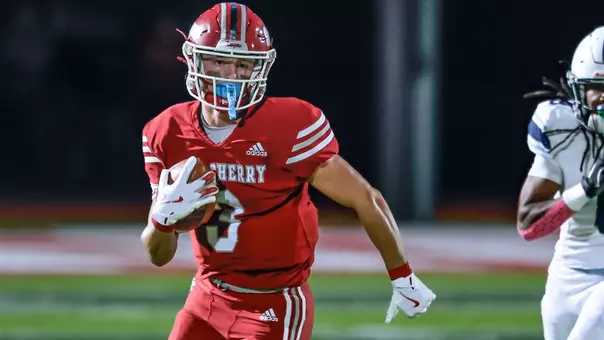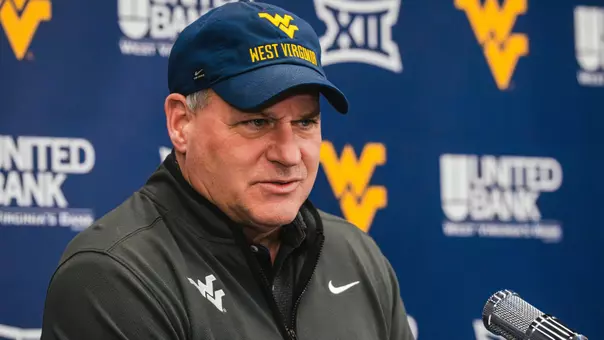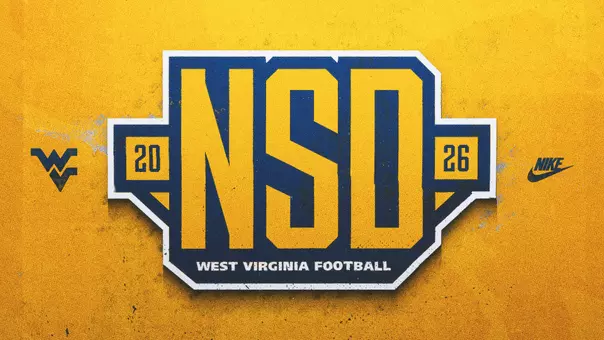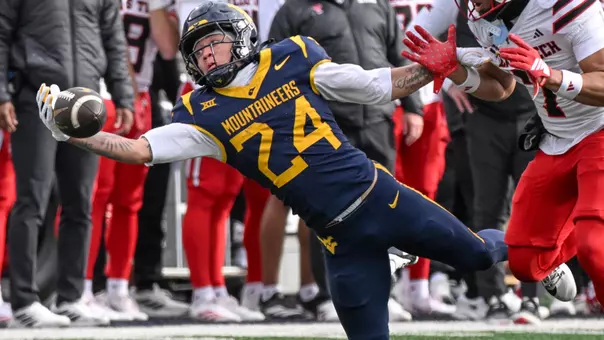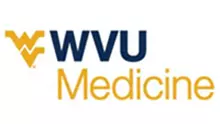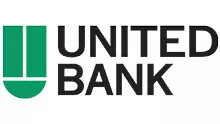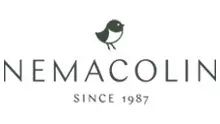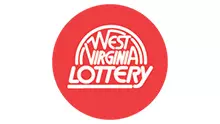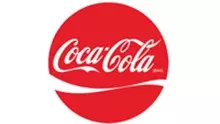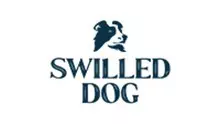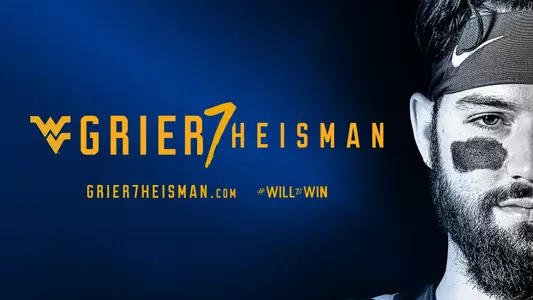
Will Grier Website Debuts
July 07, 2018 07:00 AM | Football
MORGANTOWN, W.Va. - The website Grier7heisman.com, launched this morning, is part of West Virginia University's latest effort to promote one of its high-profile football players.
Last December, when quarterback Will Grier decided to return to WVU for his senior season, he immediately put himself into contention for the 2018 Heisman Trophy race along with Stanford running back Bryce Love, Wisconsin running back Jonathan Taylor and Central Florida quarterback McKenzie Milton.
Promotional campaigns have long been a part of West Virginia's athletic publicity history, dating back to the mid-1950s when sports information director Rene Henry produced short informational films promoting football standouts Fred Wyant, Joe Marconi and Bruce Bosley for All-America recognition.
The late Eddie Barrett, WVU's Hall of Fame sports information director, once begged Sports Illustrated college basketball writer Jeremiah Tax to come to Morgantown to do a profile on All-America basketball player Jerry West - as he once did for Cincinnati's Oscar Robertson - but Tax declined, informing Barrett that Morgantown, West Virginia, in the late 1950s was simply too difficult to get to.
Two decades later, All-American flanker Danny Buggs, with the help of SID Dick Polen, earned extensive preseason notice in 1973 and 1974 following his brilliant sophomore campaign in 1972, but the team's subpar records during those two subsequent years ended any additional momentum for Buggs.
 Quarterback Jeff Hostetler was the next prominent Mountaineer athlete to warrant a coordinated promotional campaign in 1983.
Quarterback Jeff Hostetler was the next prominent Mountaineer athlete to warrant a coordinated promotional campaign in 1983.
A pamphlet with Hostetler dressed up in a cowboy outfit, a 45 record with a theme song titled Ole Hoss, The Ballad of West Virginia's Jeff Hostetler (theme songs seemed to be the popular thing to do back then) and a notepad with Hostetler's picture and the inscription Jeff Hostetler West Virginia's Offensive Bonanza were mailed out to all of the college football writers, helping Hoss finish seventh in the Heisman balloting that year.
Five years later, sophomore quarterback Major Harris placed fifth in the Heisman Trophy race in 1988, necessitating another Heisman push the following year in 1989.
The plan adopted by sports information director Shelly Poe was a cleverly contrived postcard writing campaign that targeted all of the Heisman voters with interesting tidbits and facts about Harris and his weekly performances.
Harris placed third that year behind winner Andre Ware and runner-up Anthony Thompson.
In 2006, running back Steve Slaton ended fourth in Heisman balloting, and a year later, teammate Pat White placed sixth, requiring another Heisman campaign for his senior year in 2008.
"Going into the 2007 Pitt game, ESPN came in and we filmed some things with Pat ahead of the Heisman Trophy award ceremony in December," Mike Montoro, WVU's longtime football publicity director, recalled, "but then the Pitt game happened and our trip to the national championship game and our trip to New York didn't happen."
The website PatWhitePlaysHere.com was developed prior to the 2008 season and White wound up placing seventh.
Four years later, wide receiver Tavon Austin finished eighth in Heisman balloting after teammate Geno Smith began the season as one of the leading contenders following his record-setting performances against Clemson in the Orange Bowl and against Baylor in West Virginia's inaugural Big 12 game early in the 2012 campaign.
Now, six years later, West Virginia has another household name in Grier, easily the school's strongest Heisman candidate since Harris in '89.
Last winter, coach Dana Holgorsen and WVU's deputy director of athletics and lead football administrator Keli Zinn discussed different ways to promote Will Grier. From those conversations, an ad hoc committee consisting of Zinn, senior associate athletic director Michael Fragale and Montoro was assembled.
Then, Montoro stocked the committee with athletic communications professionals in a variety of areas - sports marketing director Nathaniel Zinn, sports publications director Joe Swan, digital media manager Grant Dovey, multimedia specialist Kristin Coldsnow and video producer Sean Merinar - to begin developing the concepts and themes for this year's promotional campaign.
What came out of this was "The Will to Win," which will feature seven of Grier's attributes, the seven tying into his jersey number.
All seven will be encapsulated in four-minute video vignettes that will be revealed throughout the remainder of the summer leading into the 2018 season opener against Tennessee.
The first one, "The Will to Prepare," will be posted next Sunday, July 15 (at 7 p.m. of course) and each Sunday another video will be posted at seven in the evening.
"Everything has a tie to No. 7, including the launch date of the website on July 7 at 7 a.m.," Montoro explained. "We will post the seven traits of Will Grier leading into the season opener against Tennessee, and then we will update the website each week during the season with his highlights, notes, stats and game recaps."
The website will also have other information about the quarterback such as old video highlights of him playing in high school, a section on Will and his wife, Jeanne, and their daughter, Eloise, and other personal information.
"It's going to be all-inclusive to help people get to know Will better, who he is on the field, who he is off the field and what he's done in the community volunteering his time," Montoro explained.
To tease the website launch, Chris Ostien, of television productions, produced a hype video that was released online and through West Virginia's three primary football social media platforms on Facebook, Twitter and Instagram, numbering more than a half-million users.
According to Montoro, West Virginia University's athletic compliance department has been involved throughout the entire process. In the meantime, Montoro has already arranged interviews for Grier with ESPN The Magazine and The Athletic, as well as a podcast with ESPN's Marty Smith.
The quarterback was on the cover of all four major preseason college football magazines this summer, including an on-campus photo shoot with teammate David Sills V that appeared in this year's Athlon Sports College Football Preview.
Montoro said social media and email will be the two primary means to help drive viewers to Grier's website where information will be updated frequently.
Perhaps even Grier's younger brothers, Nash and Hayes, two popular Internet sensations with followers numbering in the millions, will also lend a hand in helping spread the word about their big brother.
Montoro said his department will also continue to promote heavily Grier's teammates Sills V, Gary Jennings Jr., David Long Jr., Dravon Askew-Henry and Yodny Cajuste - West Virginia's other top returning players at their respective positions - as it once did in 2007 when White and Slaton were WVU's marquee returners and in 2012 when Smith, Austin and Stedman Bailey were lighting up the scoreboards that season.
As with any promotional campaign, Grier's on-field performance and the team's success are going to be the two primary determinants in where Grier finishes this year, Montoro cautioned.
So no, Montoro has not made any plans to have Will change the pronunciation of his name as Notre Dame's Roger Valdiserri once encouraged quarterback Joe Theisman, pronounced THEES-man, to do in 1970 so it would rhyme with Heisman.
By the way, the ploy didn't work.
He finished second to Stanford's Jim Plunkett in the Heisman Trophy balloting because Plunkett simply had a much better year than the guy from New Jersey once known as THEES-man did.
Last December, when quarterback Will Grier decided to return to WVU for his senior season, he immediately put himself into contention for the 2018 Heisman Trophy race along with Stanford running back Bryce Love, Wisconsin running back Jonathan Taylor and Central Florida quarterback McKenzie Milton.
Promotional campaigns have long been a part of West Virginia's athletic publicity history, dating back to the mid-1950s when sports information director Rene Henry produced short informational films promoting football standouts Fred Wyant, Joe Marconi and Bruce Bosley for All-America recognition.
The late Eddie Barrett, WVU's Hall of Fame sports information director, once begged Sports Illustrated college basketball writer Jeremiah Tax to come to Morgantown to do a profile on All-America basketball player Jerry West - as he once did for Cincinnati's Oscar Robertson - but Tax declined, informing Barrett that Morgantown, West Virginia, in the late 1950s was simply too difficult to get to.
Two decades later, All-American flanker Danny Buggs, with the help of SID Dick Polen, earned extensive preseason notice in 1973 and 1974 following his brilliant sophomore campaign in 1972, but the team's subpar records during those two subsequent years ended any additional momentum for Buggs.
 Quarterback Jeff Hostetler was the next prominent Mountaineer athlete to warrant a coordinated promotional campaign in 1983.
Quarterback Jeff Hostetler was the next prominent Mountaineer athlete to warrant a coordinated promotional campaign in 1983. A pamphlet with Hostetler dressed up in a cowboy outfit, a 45 record with a theme song titled Ole Hoss, The Ballad of West Virginia's Jeff Hostetler (theme songs seemed to be the popular thing to do back then) and a notepad with Hostetler's picture and the inscription Jeff Hostetler West Virginia's Offensive Bonanza were mailed out to all of the college football writers, helping Hoss finish seventh in the Heisman balloting that year.
Five years later, sophomore quarterback Major Harris placed fifth in the Heisman Trophy race in 1988, necessitating another Heisman push the following year in 1989.
The plan adopted by sports information director Shelly Poe was a cleverly contrived postcard writing campaign that targeted all of the Heisman voters with interesting tidbits and facts about Harris and his weekly performances.
Harris placed third that year behind winner Andre Ware and runner-up Anthony Thompson.
In 2006, running back Steve Slaton ended fourth in Heisman balloting, and a year later, teammate Pat White placed sixth, requiring another Heisman campaign for his senior year in 2008.
"Going into the 2007 Pitt game, ESPN came in and we filmed some things with Pat ahead of the Heisman Trophy award ceremony in December," Mike Montoro, WVU's longtime football publicity director, recalled, "but then the Pitt game happened and our trip to the national championship game and our trip to New York didn't happen."
The website PatWhitePlaysHere.com was developed prior to the 2008 season and White wound up placing seventh.
Four years later, wide receiver Tavon Austin finished eighth in Heisman balloting after teammate Geno Smith began the season as one of the leading contenders following his record-setting performances against Clemson in the Orange Bowl and against Baylor in West Virginia's inaugural Big 12 game early in the 2012 campaign.
Now, six years later, West Virginia has another household name in Grier, easily the school's strongest Heisman candidate since Harris in '89.
Last winter, coach Dana Holgorsen and WVU's deputy director of athletics and lead football administrator Keli Zinn discussed different ways to promote Will Grier. From those conversations, an ad hoc committee consisting of Zinn, senior associate athletic director Michael Fragale and Montoro was assembled.
Then, Montoro stocked the committee with athletic communications professionals in a variety of areas - sports marketing director Nathaniel Zinn, sports publications director Joe Swan, digital media manager Grant Dovey, multimedia specialist Kristin Coldsnow and video producer Sean Merinar - to begin developing the concepts and themes for this year's promotional campaign.
What came out of this was "The Will to Win," which will feature seven of Grier's attributes, the seven tying into his jersey number.
All seven will be encapsulated in four-minute video vignettes that will be revealed throughout the remainder of the summer leading into the 2018 season opener against Tennessee.
The first one, "The Will to Prepare," will be posted next Sunday, July 15 (at 7 p.m. of course) and each Sunday another video will be posted at seven in the evening.
"Everything has a tie to No. 7, including the launch date of the website on July 7 at 7 a.m.," Montoro explained. "We will post the seven traits of Will Grier leading into the season opener against Tennessee, and then we will update the website each week during the season with his highlights, notes, stats and game recaps."
The website will also have other information about the quarterback such as old video highlights of him playing in high school, a section on Will and his wife, Jeanne, and their daughter, Eloise, and other personal information.
"It's going to be all-inclusive to help people get to know Will better, who he is on the field, who he is off the field and what he's done in the community volunteering his time," Montoro explained.
To tease the website launch, Chris Ostien, of television productions, produced a hype video that was released online and through West Virginia's three primary football social media platforms on Facebook, Twitter and Instagram, numbering more than a half-million users.
According to Montoro, West Virginia University's athletic compliance department has been involved throughout the entire process. In the meantime, Montoro has already arranged interviews for Grier with ESPN The Magazine and The Athletic, as well as a podcast with ESPN's Marty Smith.
The quarterback was on the cover of all four major preseason college football magazines this summer, including an on-campus photo shoot with teammate David Sills V that appeared in this year's Athlon Sports College Football Preview.
Montoro said social media and email will be the two primary means to help drive viewers to Grier's website where information will be updated frequently.
Perhaps even Grier's younger brothers, Nash and Hayes, two popular Internet sensations with followers numbering in the millions, will also lend a hand in helping spread the word about their big brother.
Montoro said his department will also continue to promote heavily Grier's teammates Sills V, Gary Jennings Jr., David Long Jr., Dravon Askew-Henry and Yodny Cajuste - West Virginia's other top returning players at their respective positions - as it once did in 2007 when White and Slaton were WVU's marquee returners and in 2012 when Smith, Austin and Stedman Bailey were lighting up the scoreboards that season.
As with any promotional campaign, Grier's on-field performance and the team's success are going to be the two primary determinants in where Grier finishes this year, Montoro cautioned.
So no, Montoro has not made any plans to have Will change the pronunciation of his name as Notre Dame's Roger Valdiserri once encouraged quarterback Joe Theisman, pronounced THEES-man, to do in 1970 so it would rhyme with Heisman.
By the way, the ploy didn't work.
He finished second to Stanford's Jim Plunkett in the Heisman Trophy balloting because Plunkett simply had a much better year than the guy from New Jersey once known as THEES-man did.
Players Mentioned
Rich Rodriguez | Dec. 3
Wednesday, December 03
Reid Carrico | Nov. 29
Saturday, November 29
Jeff Weimer | Nov. 29
Saturday, November 29
Rich Rodriguez | Nov. 29
Saturday, November 29
